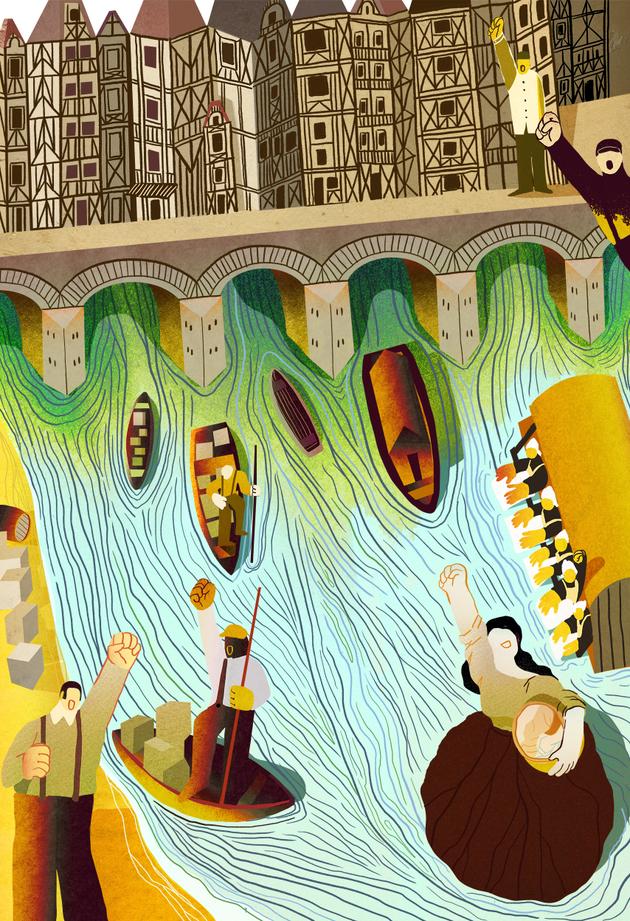

Isabelle Backouche, historian: 'The Seine was the beating heart of Parisian life before the capital turned its back on it'
InterviewThe 18th century marked a turning point in Parisians' relationship with the river. In the face of royal powers who wanted to drive them out of the Seine, merchants and craftsmen resisted, but eventually had to withdraw. Out of this rupture was born a rationalized city that is now striving to rebuild its links with the river.

A specialist in urban history, Isabelle Backouche has worked on the letters and grievances of 18th-century Parisians, testifying to their attachment to the river at a time when the state wanted to transform the Seine into a heritage and navigation area. At the dawn of the Industrial Revolution, the close ties between city dwellers and the river began to fade, until a new era of closeness appeared at the start of the 21st century. Backouche is a research director at the EHESS (School for Advanced Studies in the Social Sciences) and the author of La Trace du fleuve. La Seine et Paris (1750-1850) ("The Trace of the River. The Seine and Paris (1750-1850)") and Paris au fil de la Seine dévoilé. Les lieux se racontent ("Paris along the Seine unveiled. Places tell their story").
In your book, you mention the "intense presence of the river in the city" in the 18th century. How did this manifest itself?
The Seine has been an essential space for Parisians since the Middle Ages. In the 18th century, there was still a very strong porosity between the city and the river, as the banks were undeveloped and sloped gently towards the river.
So, it was very tempting to bathe there, even though it was forbidden except in bathing boats. You could wash yourself, your clothes or have them washed in "laundry boats" moored to the banks, which in the 19th century became so-called "bateaux-lavoirs." The river is the beating heart of the city, a place to stroll and have fun, as well as a commercial center.
Goods arrived mainly by boat and were not discharged. Everyone got on board to do their shopping. River shuttles called "bachots" linked the two banks, since before 1860 there were only a dozen bridges, and they were very congested. Houses were built on these bridges, and horse, cart and pedestrian traffic remained limited. When in a hurry, you took the bachot. There was a very strong and rather unique bond between Parisians and the Seine, probably stronger than in other cities with rivers running through them, such as Rome and London, where the docks separated the city from the river very early on.
Who organized and regulated all these activities?
Two figures share – and contend for – governance. Historically, since the 13th century, the merchant's provost was in charge of the city's affairs, representing Parisians in their dealings with the royal authorities. The provost was most often a member of the powerful corporation of water merchants, and the city's seal, adorned with a boat, is a reminder of this affiliation.
You have 75.89% of this article left to read. The rest is for subscribers only.
